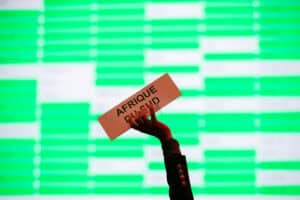The electronic voting system has eased our administrative work with the elections and has at the same time made it easier for many of our members to vote. They think that it is easy and safe to use.”
– Laurs Møller, Team leader of the Danish Veterinary Medical Association

Many traditions are linked to democratic participation in associations: any reformatting of the basic democratic rules of play are often beset with uncertainty as to how members will view the change. The Danish Veterinary Association is no exception. Laurs Møller, a DDD team leader, points out that the association is not generally thought of as ground-breakers; some would even go so far as to call them conservative in their attitude towards change. DDD was not about to opt for digital voting for its board without careful consideration. The association finally agreed, however, that vets are ready to move into the digital world.
This turned out to be the right decision: members of the association were more than ready to move on.
They not only voted digitally but were ready on the spot to give their feedback and to say how happy they were with the new option. This is a development that promises well for future democratic participation in DDD.
Nothing but praise for this method of voting. Really good – and easy!”
– unsolicited email from a member.
Feedback from members has been to the effect that taking part in the vote for the Board has been far easier to grasp and more accessible. Before, an envelope – sometimes several centimetres thick – would arrive on the doormat after the annual general assembly. This was the way candidates were presented, and the way the polling card and return envelope were sent.
Digitalisation of the election has allowed people to form a better picture of candidates and there are fewer barriers in the way of deciding one’s preference and casting a vote. With the digital solution, members can read about individual candidates at whatever time suits them: on a work computer, mobile phone, on the way home from work or similar. Once they have chosen, they can simply cast their vote without having to remember to take the letter with them and find a mailbox to send it.
The catalyst
Simpler access was a motivating factor in DDD’s decision to introduce digital elections. As Møller stresses, members should be able to take part whether they are at a conference in Australia, at home, or at the clinic.
Another important reason is that staging the election was always labour intensive for the secretariat and that the costs for sending polling cards by mail and handling the return envelopes was a sizable one. The digital ballot, with polling cards, is on the other hand sent by email and there is no need to print and insert candidate leaflets into envelopes. This eases both the labour and financial cost.
The litmus test
Besides the 11 various committees for which elections are held in DDD, there are also referendums on contractual matters. Two of these have already been held digitally and were, according to Møller, a litmus test of members’ attitude towards digital voting. Now that all the various types of ballot in DDD have been successfully executed in digital format, the idea is to use this method exclusively in future.
Facts
Members were invited by email to take part in the election of members to the main board.
Those members whose emails ‘bounced’ had a letter sent by mail to their addresses.
The possibility of a letter was a transition service: in future, it is the responsibility of the member to provide DDD with their correct email address.
Information and candidate profiles were incorporated in the election procedure. There was a single access point to the ballot.
All DDD ballots – whether on a contractual matter or for committee members – will be held digitally in future.
Beyond the main board election, DDD also stages elections for 10 other boards in sub-sections of the association.


